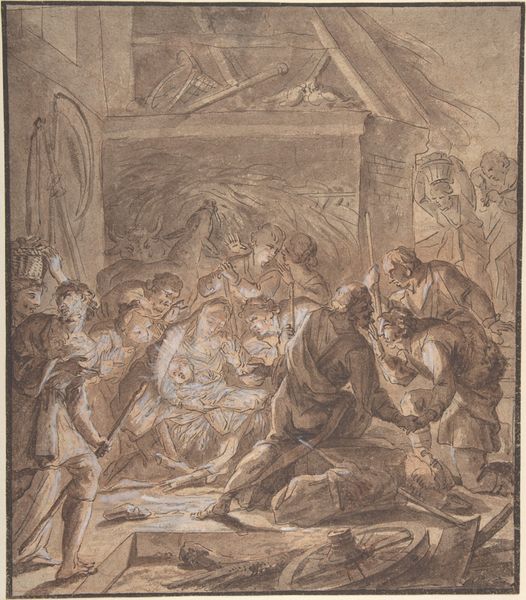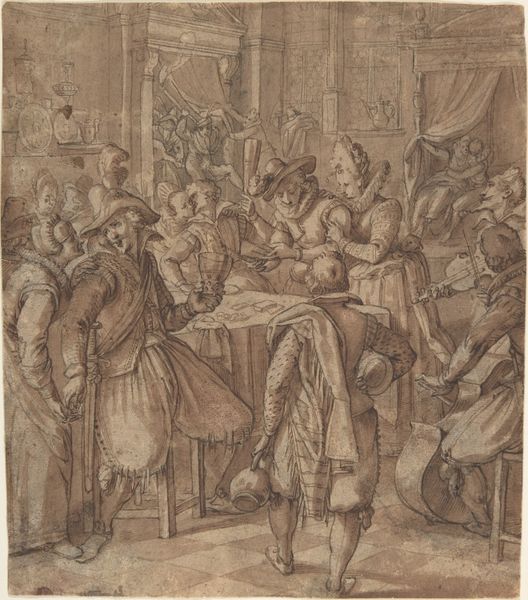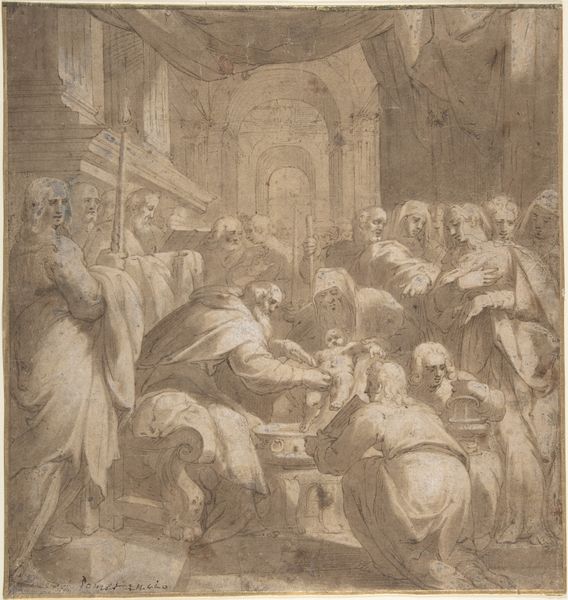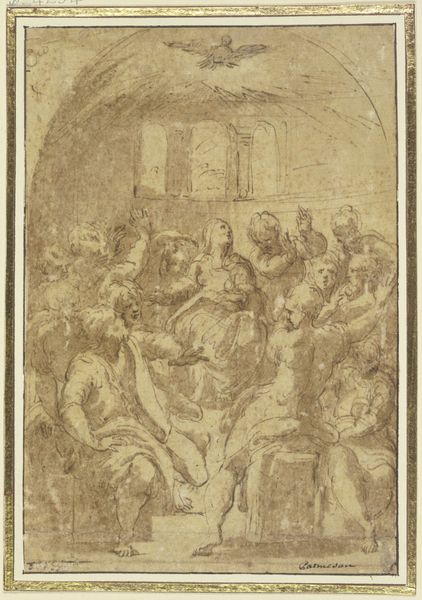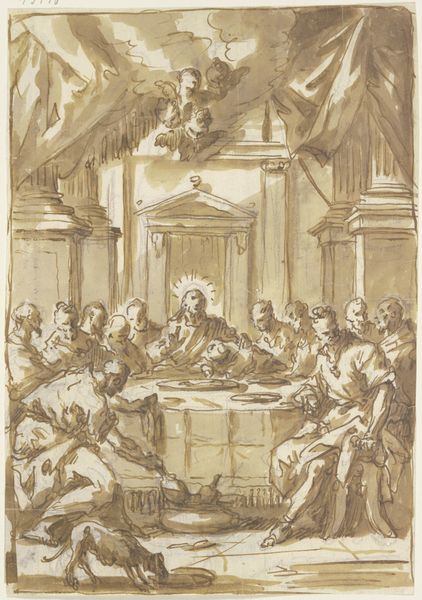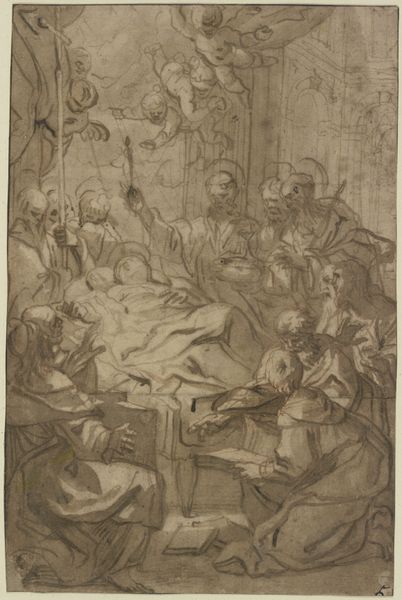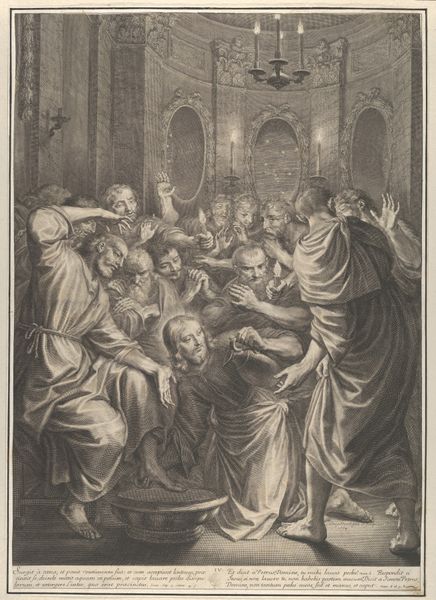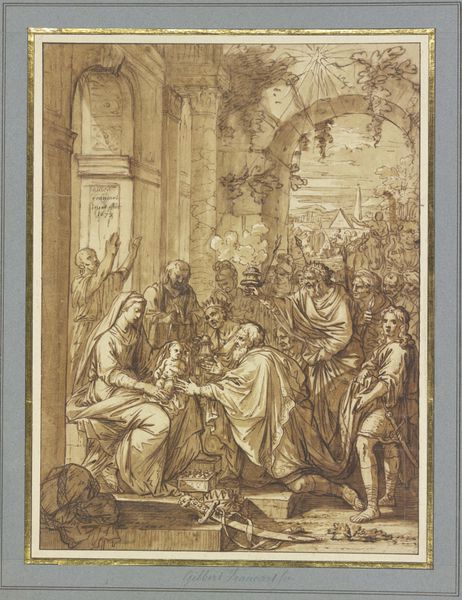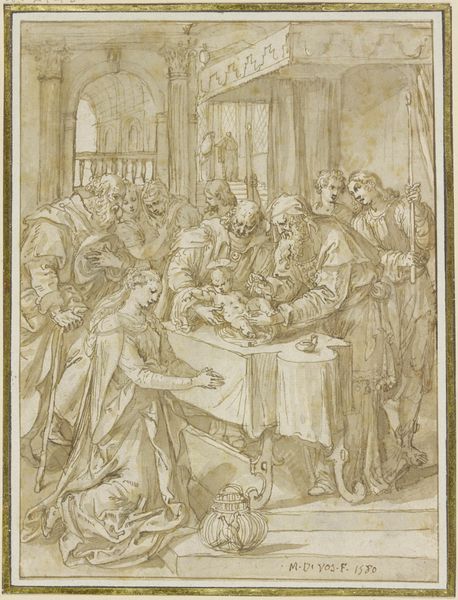
drawing, pen, charcoal
#
drawing
#
charcoal drawing
#
figuration
#
oil painting
#
pen
#
charcoal
#
history-painting
#
northern-renaissance
#
charcoal
Dimensions: height 245 mm, width 204 mm
Copyright: Rijks Museum: Open Domain
Curator: This artwork is "The Last Supper," rendered in charcoal and pen by Dirck Barendsz, sometime between 1575 and 1585. You can find it here at the Rijksmuseum. Editor: My initial impression is one of subdued drama. The grayscale palette focuses the eye on the composition itself – the weight of that pivotal moment hanging heavy. Curator: Absolutely. Barendsz uses shadow and light to amplify the emotional density of the scene. You feel the anxiety rippling through the apostles. Note how their faces are illuminated, while the background is left rather vague and undefined, adding to the sense of them being caught in a momentous event. Editor: And what does Barendsz communicate through this interpretation, in relation to earlier and later depictions? It certainly diverges from the iconic versions. Curator: It is fascinating when viewed against earlier interpretations, like Leonardo's, that focus on a moment of explosive revelation. Barendsz chooses a more introspective atmosphere, more consistent with the unease growing amidst the rise of Protestantism in the Netherlands. Editor: It makes me consider how the evolving religious and social climates directly impact artistic representation. The somber tone of the artwork resonates profoundly when one thinks about the rising tension around the Reformation. I am struck by how the formal qualities embody a historical anxiety. Curator: The history absolutely infuses every mark. Look closely and see the cultural context; it goes beyond mere representation, doesn't it? There is more on offer than a scene playing out as the artist felt called to produce the most historically "accurate" representation. Editor: So true, the piece reminds us that these iconic stories carry within them the burdens and nuances of the eras that re-imagine them. It underscores how vital it is to engage with art not only aesthetically, but as cultural evidence. Curator: A perspective that really amplifies our connection to it! Thanks, the discussion made this piece feel far more significant and impactful. Editor: I feel likewise! Reflecting on the history of a piece is powerful.
Comments
No comments
Be the first to comment and join the conversation on the ultimate creative platform.
